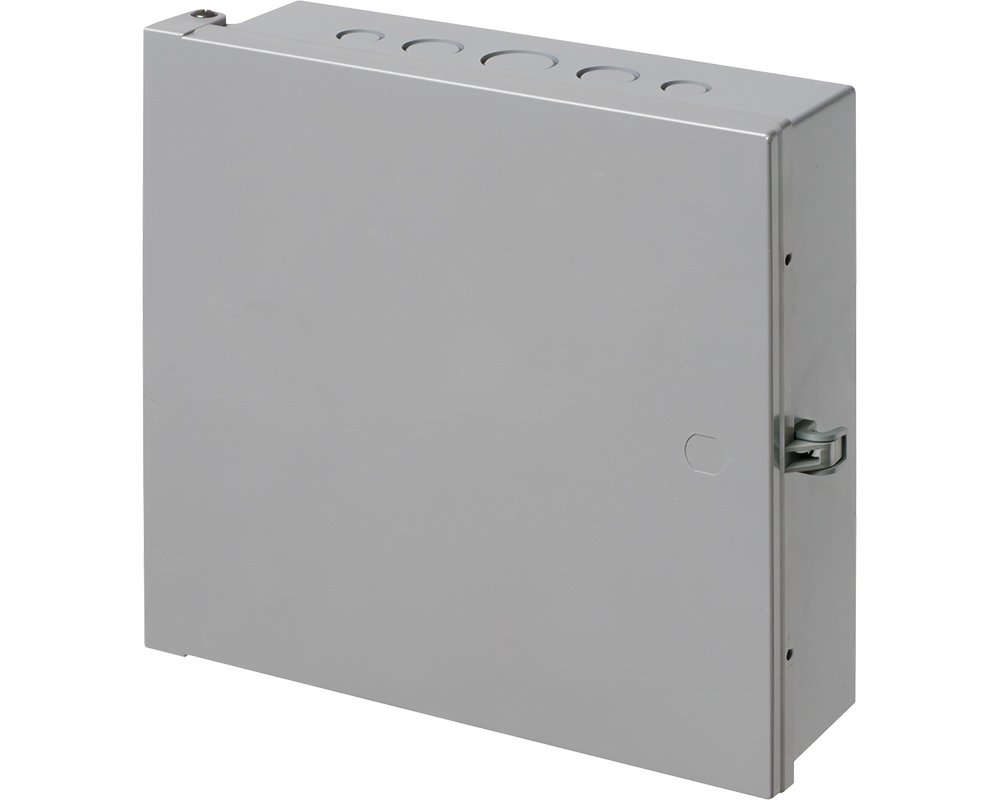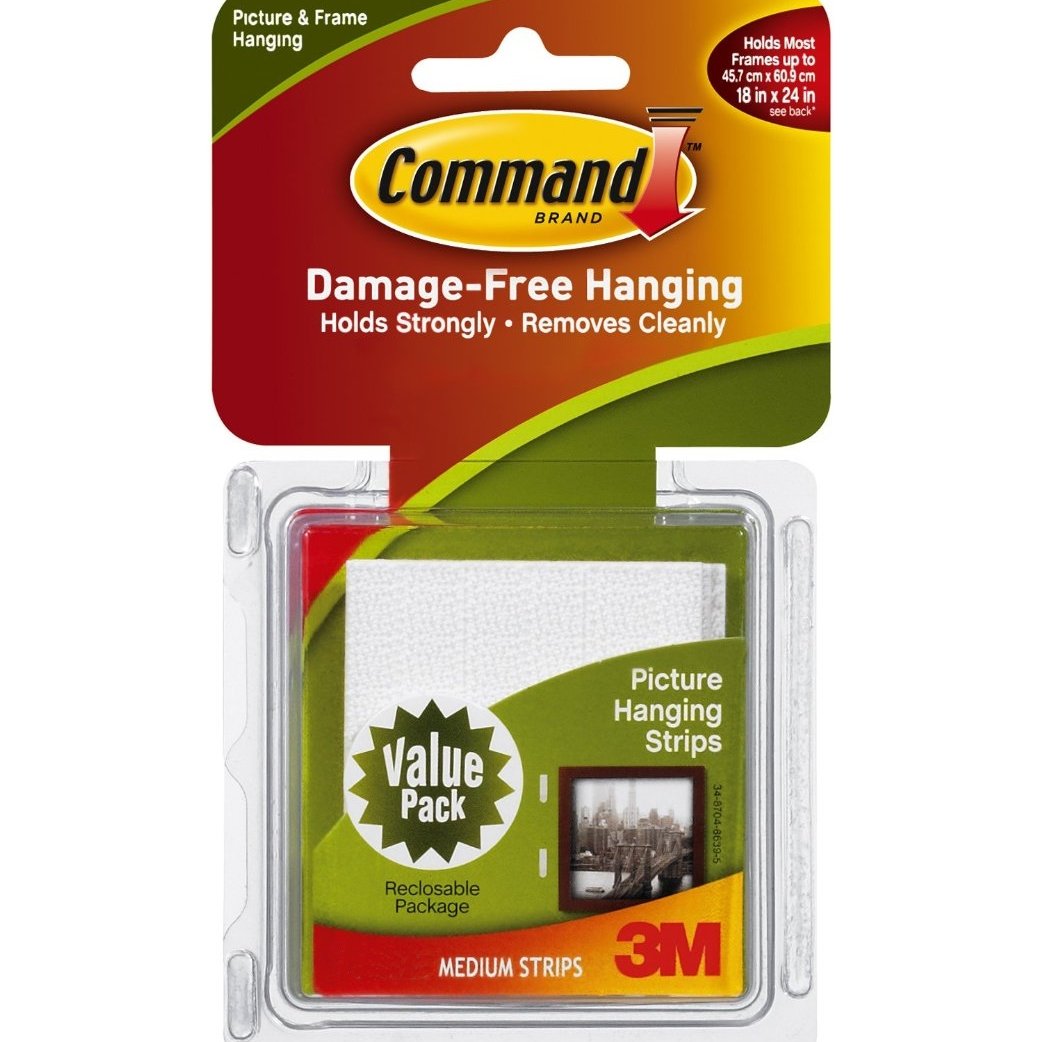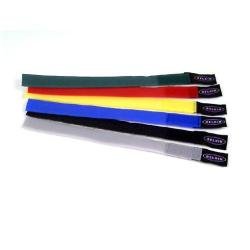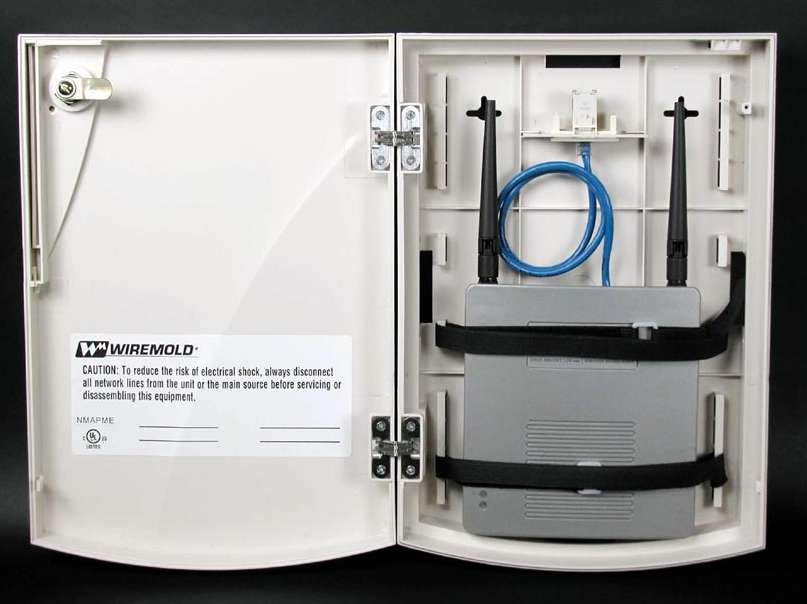NeverDie
Senior Member
I now have this non-metalic enclosure surface mounted in my pantry:

(http://www.amazon.com/Arlington-EB1212-1-Electronic-Equipment-Non-Metallic/dp/B00AAU5D6Q/ref=sr_1_1?s=hi&ie=UTF8&qid=1401287299&sr=1-1&keywords=arlington+non-metallic+enclosure), and I have two cat6 cables running into it from behind, coming from behind the drywall on the wall it is mounted on.
Within it, I want to install a z-troller, a Global Cache Serial2IP module, and a couple of PoE power splitters (one per ethernet cable), which are each the size and roughly the weight of a deck of playing cards. Also, there will be some short cables connecting things.
What's the preferred way to mount these components inside the enclosure? Off the top of my head, some mounting options seem to be:
1 Some kind of velcro with a sufficiently strong adhesive.
2. Maybe these picture hangers (similar to Velcro, but they can peel clean almost like a post-it note:

(http://www.amazon.com/Command-Medium-Picture-Hanging-Strips-12-Picture/dp/B00I2XSWSY/ref=sr_1_2?ie=UTF8&qid=1401286534&sr=8-2&keywords=picture+hanging+strips+3m),
3. Zip-ties.
4. mounting things to a board (again, how?), and then screwing that board to some standoffs that the enclosure provides.
5. use non-metalic pipe strapping to hold things in place. This would look like an ugly hack job, but it would probably work.
6. ????
At the moment, I'm leaning toward the picture hanging strips. Allegedly, each strip can hold up to 12 pounds--more than enough, as most likely each component weighs less than a pound. I'm not sure how well the hangers will stick to plastic, so I'd need to test that first if I go that route. Anyone here tried them for this application before?
Suggestions/recommendations?

(http://www.amazon.com/Arlington-EB1212-1-Electronic-Equipment-Non-Metallic/dp/B00AAU5D6Q/ref=sr_1_1?s=hi&ie=UTF8&qid=1401287299&sr=1-1&keywords=arlington+non-metallic+enclosure), and I have two cat6 cables running into it from behind, coming from behind the drywall on the wall it is mounted on.
Within it, I want to install a z-troller, a Global Cache Serial2IP module, and a couple of PoE power splitters (one per ethernet cable), which are each the size and roughly the weight of a deck of playing cards. Also, there will be some short cables connecting things.
What's the preferred way to mount these components inside the enclosure? Off the top of my head, some mounting options seem to be:
1 Some kind of velcro with a sufficiently strong adhesive.
2. Maybe these picture hangers (similar to Velcro, but they can peel clean almost like a post-it note:

(http://www.amazon.com/Command-Medium-Picture-Hanging-Strips-12-Picture/dp/B00I2XSWSY/ref=sr_1_2?ie=UTF8&qid=1401286534&sr=8-2&keywords=picture+hanging+strips+3m),
3. Zip-ties.
4. mounting things to a board (again, how?), and then screwing that board to some standoffs that the enclosure provides.
5. use non-metalic pipe strapping to hold things in place. This would look like an ugly hack job, but it would probably work.
6. ????
At the moment, I'm leaning toward the picture hanging strips. Allegedly, each strip can hold up to 12 pounds--more than enough, as most likely each component weighs less than a pound. I'm not sure how well the hangers will stick to plastic, so I'd need to test that first if I go that route. Anyone here tried them for this application before?
Suggestions/recommendations?





